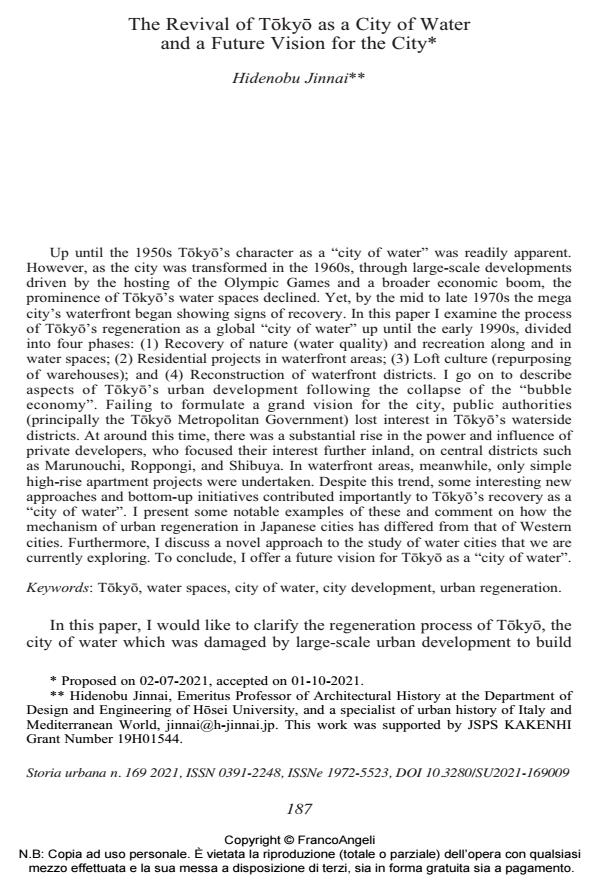The Revival of Tokyo as a City of Water and a Future Vision for the City
Journal title STORIA URBANA
Author/s Hidenobu Jinnai
Publishing Year 2022 Issue 2021/169
Language English Pages 21 P. 187-207 File size 594 KB
DOI 10.3280/SU2021-169009
DOI is like a bar code for intellectual property: to have more infomation
click here
Below, you can see the article first page
If you want to buy this article in PDF format, you can do it, following the instructions to buy download credits

FrancoAngeli is member of Publishers International Linking Association, Inc (PILA), a not-for-profit association which run the CrossRef service enabling links to and from online scholarly content.
Up until the 1950s T?ky?’s character as a "city of water" was readily apparent. However, as the city was transformed in the 1960s, through large-scale developments driven by the hosting of the Olympic Games and a broader economic boom, the prominence of T?ky?’s water spaces declined. Yet, by the mid to late 1970s the mega city’s waterfront began showing signs of recovery. In this paper I examine the process of T?ky?’s regeneration as a global "city of water" up until the early 1990s, divided into four phases: (1) Recovery of nature (water quality) and recreation along and in water spaces; (2) Residential projects in waterfront areas; (3) Loft culture (repurposing of warehouses); and (4) Reconstruction of waterfront districts. I go on to describe aspects of T?ky?’s urban development following the collapse of the "bubble economy". Failing to formulate a grand vision for the city, public authorities (principally the T?ky? Metropolitan Government) lost interest in T?ky?’s waterside districts. At around this time, there was a substantial rise in the power and influence of private developers, who focused their interest further inland, on central districts such as Marunouchi, Roppongi, and Shibuya. In waterfront areas, meanwhile, only simple high-rise apartment projects were undertaken. Despite this trend, some interesting new approaches and bottom-up initiatives contributed importantly to T?ky?’s recovery as a "city of water". I present some notable examples of these and comment on how the mechanism of urban regeneration in Japanese cities has differed from that of Western cities. Furthermore, I discuss a novel approach to the study of water cities that we are currently exploring. To conclude, I offer a future vision for T?ky? as a "city of water".
Keywords: T?ky?, water spaces, city of water, city development, urban regeneration.
Hidenobu Jinnai, The Revival of Tokyo as a City of Water and a Future Vision for the City in "STORIA URBANA " 169/2021, pp 187-207, DOI: 10.3280/SU2021-169009